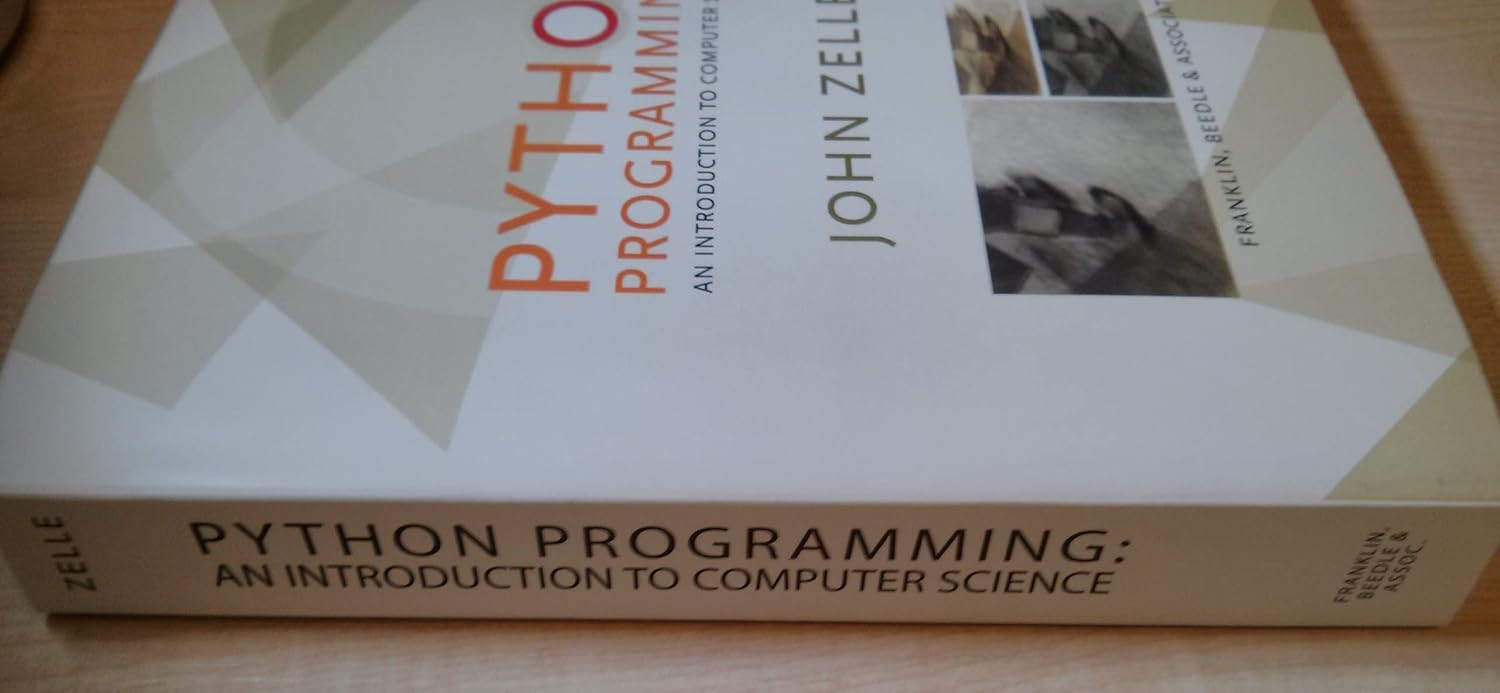As someone who loves programming and enjoys breaking down complex topics into simple, digestible parts, I was eager to dive into Python Programming: An Introduction to Computer Science by John Zelle. This book is often recommended for beginners, especially those interested in learning not just Python but also the fundamental concepts of computer science.
After reading through it, I can confidently say that this book is a fantastic choice for anyone looking to build a strong programming foundation. In this review, I will share my thoughts, key takeaways, and insights about this book.
Overview of the Book
| Feature | Details |
|---|---|
| Author | John Zelle |
| First Published | 2003 |
| Latest Edition | Third Edition (2016) |
| Pages | 552 |
| Target Audience | Beginners, students, self-learners |
| Focus Areas | Python programming, computer science fundamentals |
| Language Used | Simple, clear, and educational |
Who Is This Book For?
This book is aimed at beginners who want to learn Python while also understanding how programming and computer science work. Whether you are a high school student, college student, or an adult looking to switch careers, this book provides an easy-to-follow approach.
What Makes This Book Special?
Zelle does not just teach Python syntax; he teaches how to think like a programmer. He introduces core programming concepts like:
- Variables and data types
- Loops and conditionals
- Functions and recursion
- Object-oriented programming
- Algorithmic thinking
By the end of the book, readers will have a solid grasp of how computers process information and how to write efficient, logical code.
My Experience With the Book
Writing Style and Readability
One of the standout aspects of Python Programming: An Introduction to Computer Science is its clear and engaging writing style. Zelle keeps the tone conversational and friendly, making complex concepts easy to grasp.
Example: When explaining recursion, he compares it to a set of Russian nesting dolls. This kind of relatable analogy makes understanding abstract ideas much easier.
Hands-On Learning
The book encourages hands-on learning with practical exercises at the end of each chapter.
What I Loved:
- Step-by-step coding exercises.
- Logical progression of concepts.
- Real-world applications of programming.
Strengths of the Book
1. Well-Structured Content
- The book starts with fundamental concepts and gradually moves to more advanced topics.
- Each chapter builds upon the previous one, making it easy for beginners to follow along.
2. Computer Science Fundamentals
- Unlike many beginner books that focus solely on Python, this book introduces important computer science principles.
- Readers learn about algorithm efficiency, data structures, and problem-solving skills.
3. Code Examples and Exercises
- Each chapter includes well-explained examples and exercises to reinforce learning.
- Exercises range from simple problems to more challenging ones that require deeper thinking.
4. Great for Self-Learners and Students
- If you prefer learning at your own pace, this book is an excellent resource.
- It’s also widely used in introductory computer science courses.
Areas for Improvement
While the book is fantastic, there are a few areas where it could improve:
| Aspect | Issue | Suggestion |
| Pacing | Some concepts may feel slow for those with prior experience. | Consider skipping ahead if you find sections too basic. |
| Limited Real-World Applications | Lacks industry-focused projects. | Supplement with online projects and coding challenges. |
| Updates | The book’s last edition was in 2016, and Python has evolved. | Check for newer resources on recent Python updates. |
Despite these minor drawbacks, the book remains an excellent foundational guide.
Key Takeaways
- Beginner-Friendly: The book is perfect for those new to Python and programming.
- Concept-Driven Learning: It teaches how to think like a programmer, not just syntax.
- Strong Theoretical Foundation: Readers gain a deep understanding of algorithms, recursion, and object-oriented programming.
- Engaging Writing Style: Zelle’s friendly approach makes complex topics easy to understand.
- Great for Self-Study: With structured exercises and a logical flow, it’s an ideal resource for self-learners.
FAQ
Q: Is this book suitable for someone with no programming experience? A: Absolutely! The book is designed for complete beginners and introduces concepts step by step.
Q: Does the book cover Python 3? A: Yes, the third edition uses Python 3, but you may need to supplement it with newer Python resources.
Q: Is this book useful for someone looking to become a professional developer? A: While it provides a solid foundation, aspiring developers should complement it with more advanced courses and real-world projects.
Q: Are there better alternatives for learning Python? A: If you’re looking for a more project-based approach, books like Automate the Boring Stuff with Python might be a good supplement.
Conclusion
After reading Python Programming: An Introduction to Computer Science, I can confidently say that it is one of the best books for beginners looking to learn both Python and fundamental programming concepts. John Zelle’s clear explanations and structured approach make this book a must-read for students and self-learners alike.
However, since the book is slightly outdated, I would recommend pairing it with online resources to stay updated on the latest Python developments. If you’re serious about learning programming, this book will give you a strong foundation to build upon.
Final Verdict: ⭐⭐⭐⭐⭐ (5/5) – Highly Recommended for Beginners!
If you’re looking for a book that makes learning Python fun and accessible, this is the one for you!
